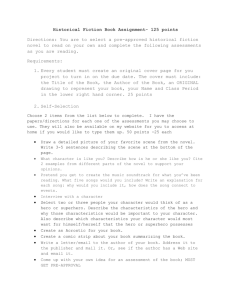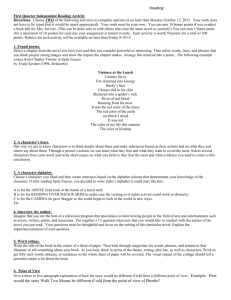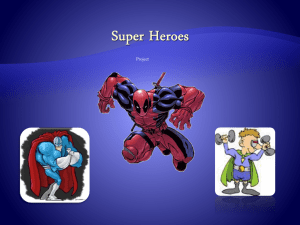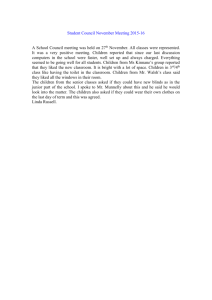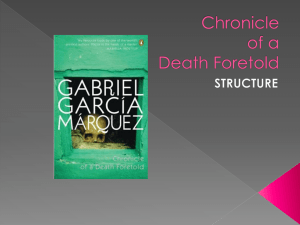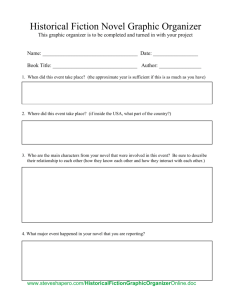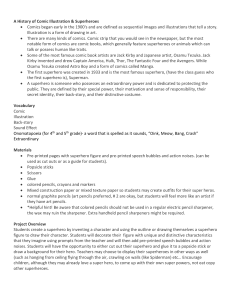Reading Requirements
advertisement
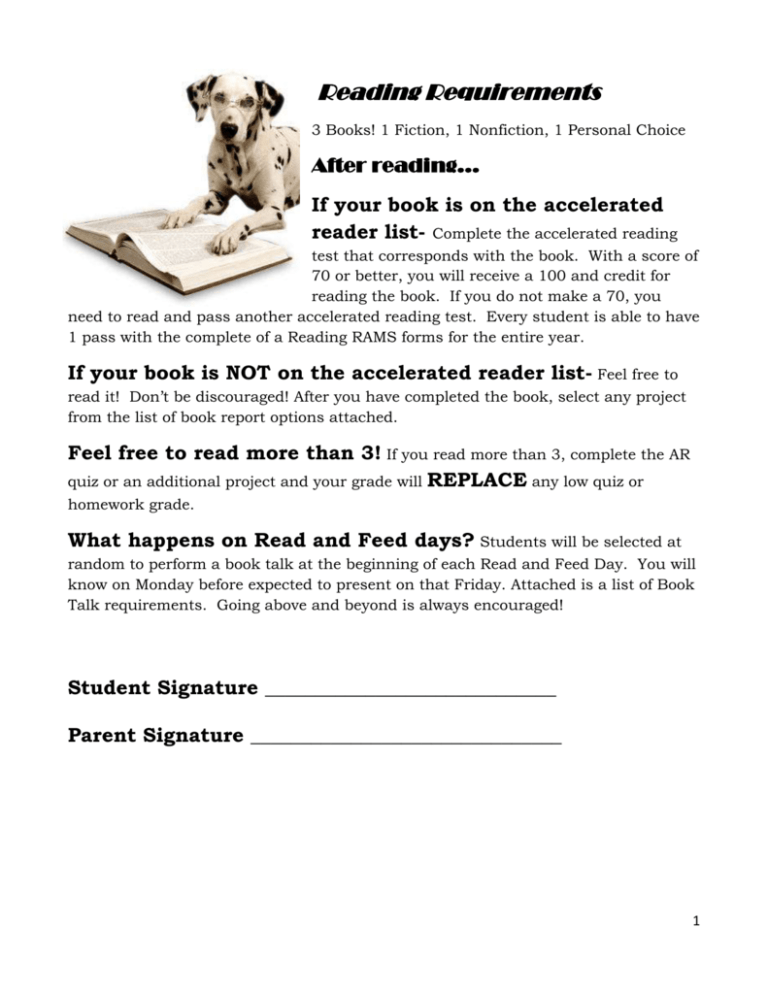
Reading Requirements 3 Books! 1 Fiction, 1 Nonfiction, 1 Personal Choice After reading… If your book is on the accelerated reader list- Complete the accelerated reading test that corresponds with the book. With a score of 70 or better, you will receive a 100 and credit for reading the book. If you do not make a 70, you need to read and pass another accelerated reading test. Every student is able to have 1 pass with the complete of a Reading RAMS forms for the entire year. If your book is NOT on the accelerated reader list- Feel free to read it! Don’t be discouraged! After you have completed the book, select any project from the list of book report options attached. Feel free to read more than 3! If you read more than 3, complete the AR quiz or an additional project and your grade will REPLACE any low quiz or homework grade. What happens on Read and Feed days? Students will be selected at random to perform a book talk at the beginning of each Read and Feed Day. You will know on Monday before expected to present on that Friday. Attached is a list of Book Talk requirements. Going above and beyond is always encouraged! Student Signature _____________________________ Parent Signature _______________________________ 1 Book Talk Requirements: 1. Select one of the required reading books. 2. Think about what you want to say. A good book talk makes one strong point, a “takeaway” that listeners can remember. 3. Keep it short! A good book talk is never much longer than a minute and a half. You can sometimes say everything you need to in less than 3 minutes! (You will be timed so PRACTICE!) 4. Describe the plot in one or two sentences. You don’t need to explain everything that happened, and you don’t want to give away the exciting stuff. 5. Describe the feeling you had while reading. Were you happy? Scared? Excited? 6. Is there an image in the book, or a passage, or a particular moment that captures why you liked the book so much? 7. Great beginnings make great book talks. Think about your first line. Ask your audience, “Do you like to laugh?” or “Do you like to be scared?” Or say, “I never met a character I liked as much as...” Or, “If you like books by Dav Pilkey (for example), you’ll love this one.” 8. Great endings make great book talks. Try not to say, “And if you want to know what happens, you’ll have to read the book.” Try instead to say, “Rush right to the library, and ask Mrs. White for a copy.” Try not to say, “I loved it.” Try instead to say, “I didn’t read it once. I didn’t read it twice. I read it three times.” 9. Wear or carry a prop connected to the storyline to pique your audience’s interest. For example, if you are going to book talk Holes by Louis Sachar you might wear sneakers, or carry a wand while talking about Alice the Fairy by David Shannon. 10. Smile! Be creative!!! Yes, you may prerecord your book talk and show it on the Read and Feed Day! http://schools.nyc.gov/documents/d75/ais/booktalktips.pdf 2 F Nifty Alternatives to the Book Report 1. Character astrology signs. After reading brief descriptions of the astrology or sun signs, figure out which signs you think three of the main characters from your book were born under. Write an explanation of why you think they fit the sign, drawing on their actions, attitudes, and thoughts from the book. 2. Heroes and superheroes. Select two or three people your character would think of as a hero or superhero. Describe the characteristics of the hero and why those characteristics would be important to your character. Also describe which characteristics your character would most want for himself/herself that the hero or superhero possesses. 3. Create a childhood for a character. If your main character is an adult, try to figure out what he or she would have been like as a child. Write the story of his or her childhood in such a way that shows why he or she is the way he or she is in the novel. 4. Critique from the point of view of a specific organization. Select an organization that might have a lot to say about the actions or portrayals of characters in the novel you read, and write a critique of the book from its point of view. For example the Society for the Prevention of Cruelty to Animals might have a lot to say about Lennie’s treatment of animals in Of Mice and Men, The National Association for the Advancement of Colored People on the portrayal of Crooks, and the National Organization of Women on the portrayal of Curley’s wife and the fact that she was never given a name. 5. Social worker’s report. If the events in the novel merit it, write up a report as a social worker would on the conditions in the home and whether or not it’s a good environment for a child. For example, if a social worker went to the McNabs’ house in Maniac Magee by Jerry Spinelli (1990, Little, Brown) how would she describe the home and parenting style of Mr. McNab? What would her recommendations be? 6. College application. Create the application that a character you have just read about could write and submit to a college. Use all the information you know about the character and infer and create the rest of it. On the application include Name, Academic Rank in Class, High School Courses Taken and Grades, Extracurricular Activities and Personal Activities, and Work Experience. Choose one of the following 3 questions to answer in a two-page essay from the character’s point of view: what experience, event, or person has had a significant impact on your life? Discuss a situation where you have made a difference. Describe your areas of interest, your personality, and how they relate to why you would like to attend this college. 7. School counselor’s recommendation letter. Write a summary appraisal from the school counselor’s point of view that assesses the character’s academic and personal qualities and promise for study in college. The college is particularly interested in evidence about character, relative maturity, integrity, independence, values, special interest, and any noteworthy talents or qualities. Why do you feel this student would be well-suited to attend college? 8. Yearbook entries. Imagine what three or four characters from your novel were like in high school. Cut out a picture of a person from a magazine to represent each character. Mount one picture per page and under each picture place the following information which you will create: nickname of character; activities, clubs, sports they were in and what years; class mock award such as “class clown”; quotation that shows something about the person and what is important to him or her; favorites such as colors and foods; a book that has had a great impact on him or her; voted “most-likely-to” what?; plans after high school. 9. Talk to the author. Write a letter to the author of the book explaining to him or her why you think he or she wrote the book and what he or she was trying to show through the book. Be sure to explain what you got out of the book. If the author is still alive, send the letter to the author via the publisher of the book. 10. A character alphabet. Choose a character you liked and then create sentences based on the alphabet scheme that demonstrate your knowledge of the character. If after reading Spite Fences, you decided to write Zeke’s alphabet it could start like this: A is for the ABUSE Zeke took at the hands of a racist mob. B is for his BENDING OVER BACKWARDS to make sure the visiting civil rights activist could work in obscurity. C is for the CAMERA he gave Maggie so she could begin to look at the world in new ways. 4
